Small peacock butterfly (Saturnia pavonia) male 🦋
Today I was allowed to photograph this beautiful moth in my garden, he was sitting on a wooden wall and probably looked for a female.
The wings of the males are high contrast orange, white, black and usually also pink. The females are less noticeable, but with a wingspan of over eight centimeters, much larger than the males. The moth owes its name to pronounced eye-like patches on the wings. They serve as a deterrent to enemies. The bright crescent-shaped drawings at the top of the eye spots (highlights) make the eye spots appear particularly realistic.
The butterflies fly in Germany from early April to May. They have neither mouthparts nor digestive tract and do not eat. They only feed on the reserves they have eaten as caterpillars. Therefore, the moths live only a few days after hatching.
The females of the Little Night Peafowl keep hidden during the day and especially in the afternoon via a gland on the abdomen from a sexual attractant (pheromone) from, to attract males. The males perceive this scent for miles with their large fan-shaped antennae and find so to the females. They fly fast and flat over the vegetation.
After mating, the female lays her eggs at night. The 1-1.5 mm oval eggs are creamy white to brown marbled and are placed in groups around thin branches of the caterpillars of the caterpillars. Eggs are found on rose plants such as blackthorn, rose, strawberry, raspberry or blackberry but also on other plants such as heather, blueberry, meadow sage or sage willow.
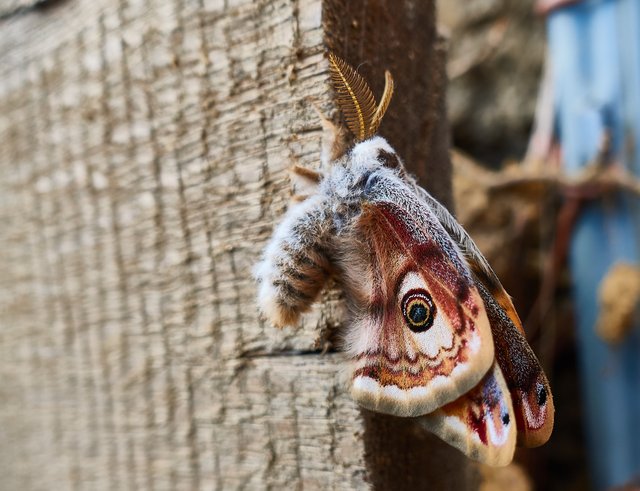
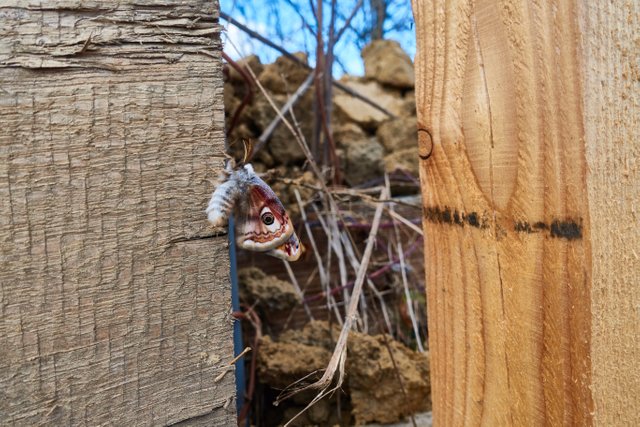
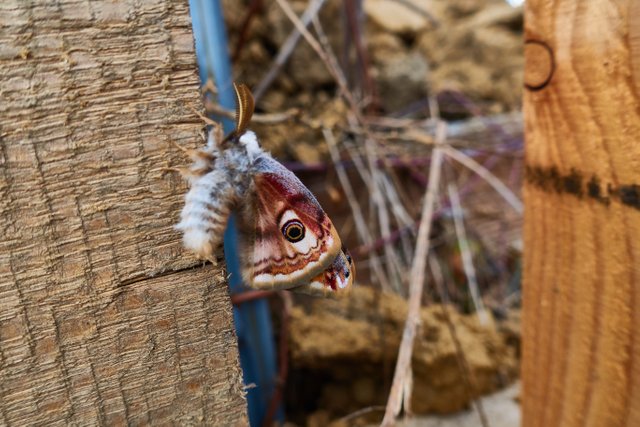
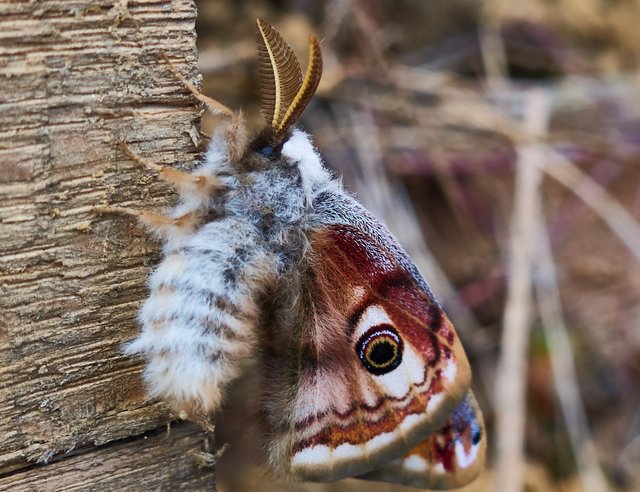
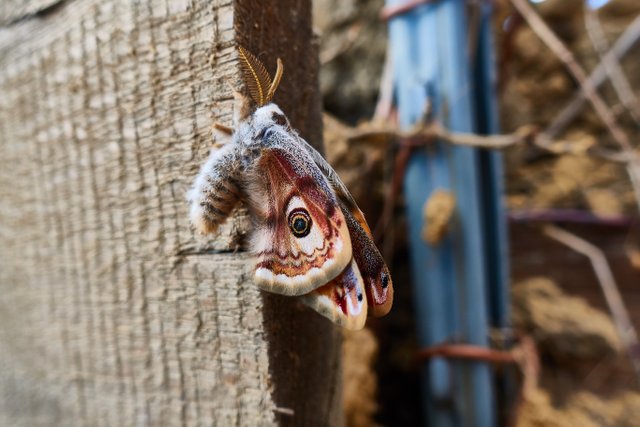
SONY DSC-RX 100M4; ISO-125; F/4